Asus Zenbook S 13 OLED (2023) Review
An exciting design upgrade brings troublesome consequences




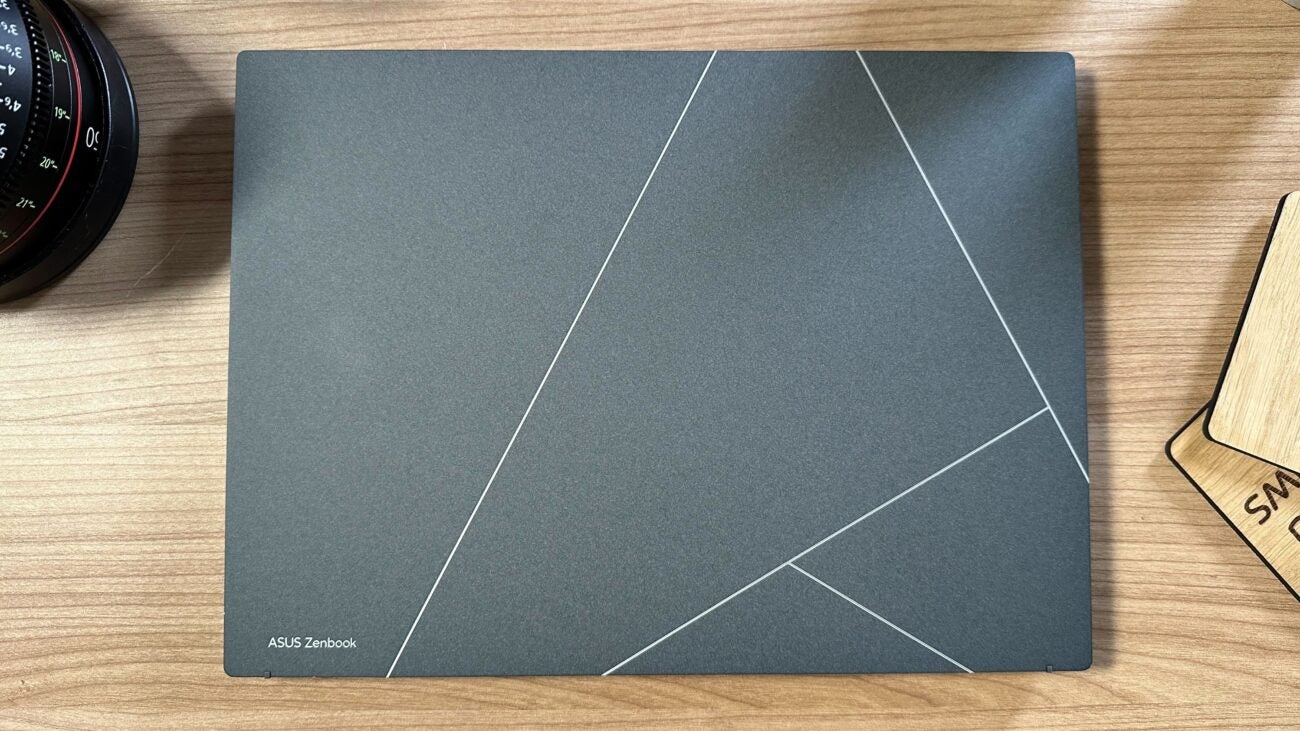
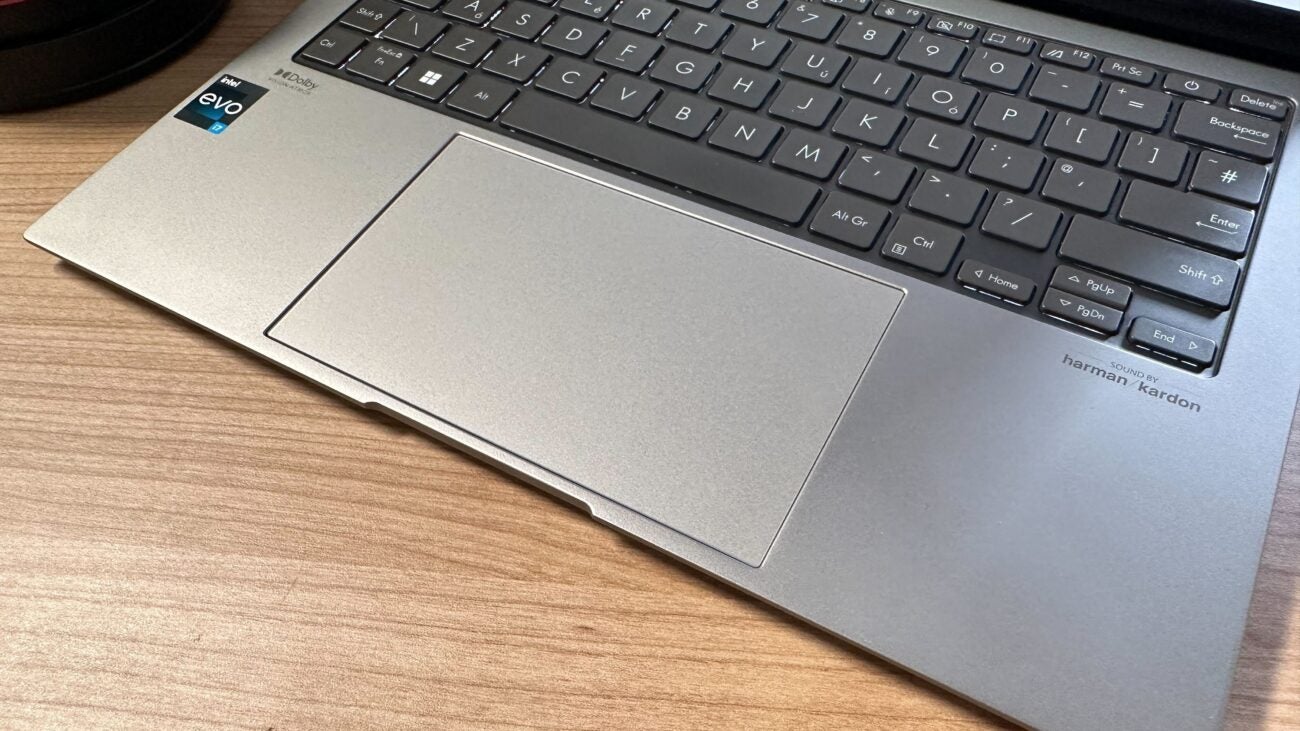

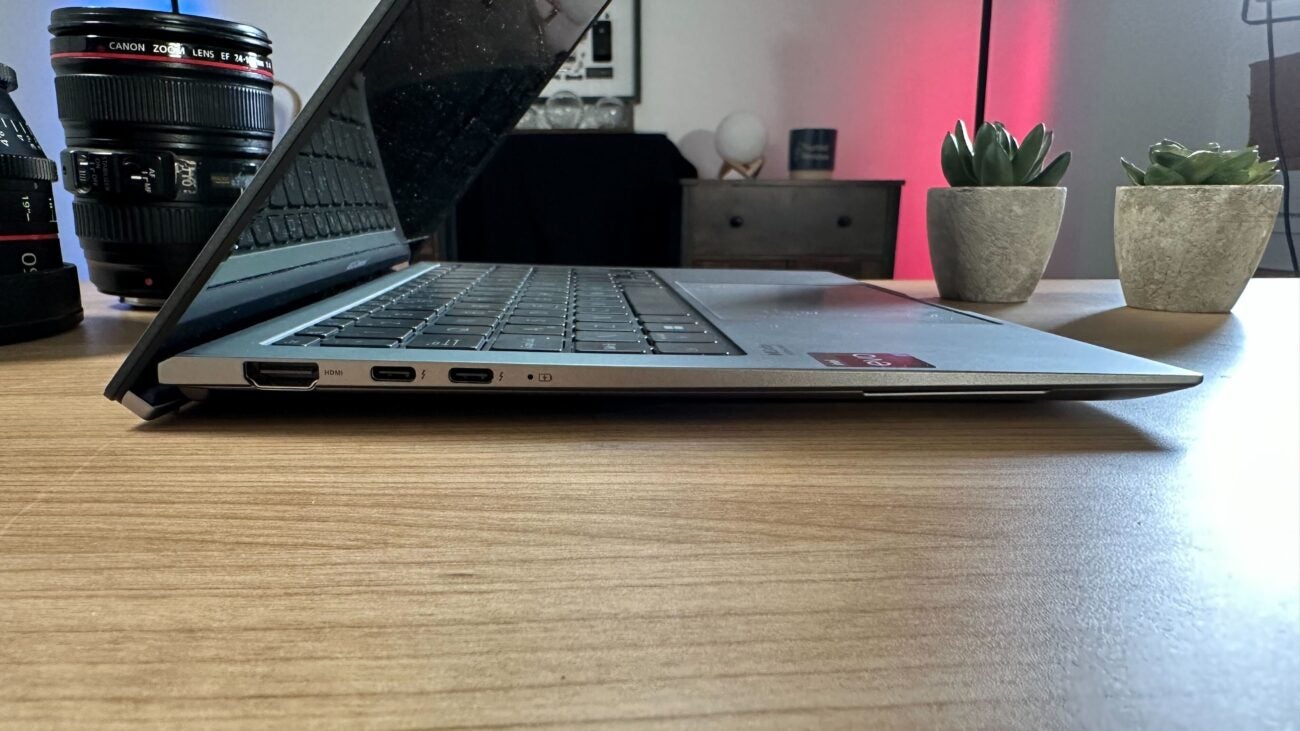
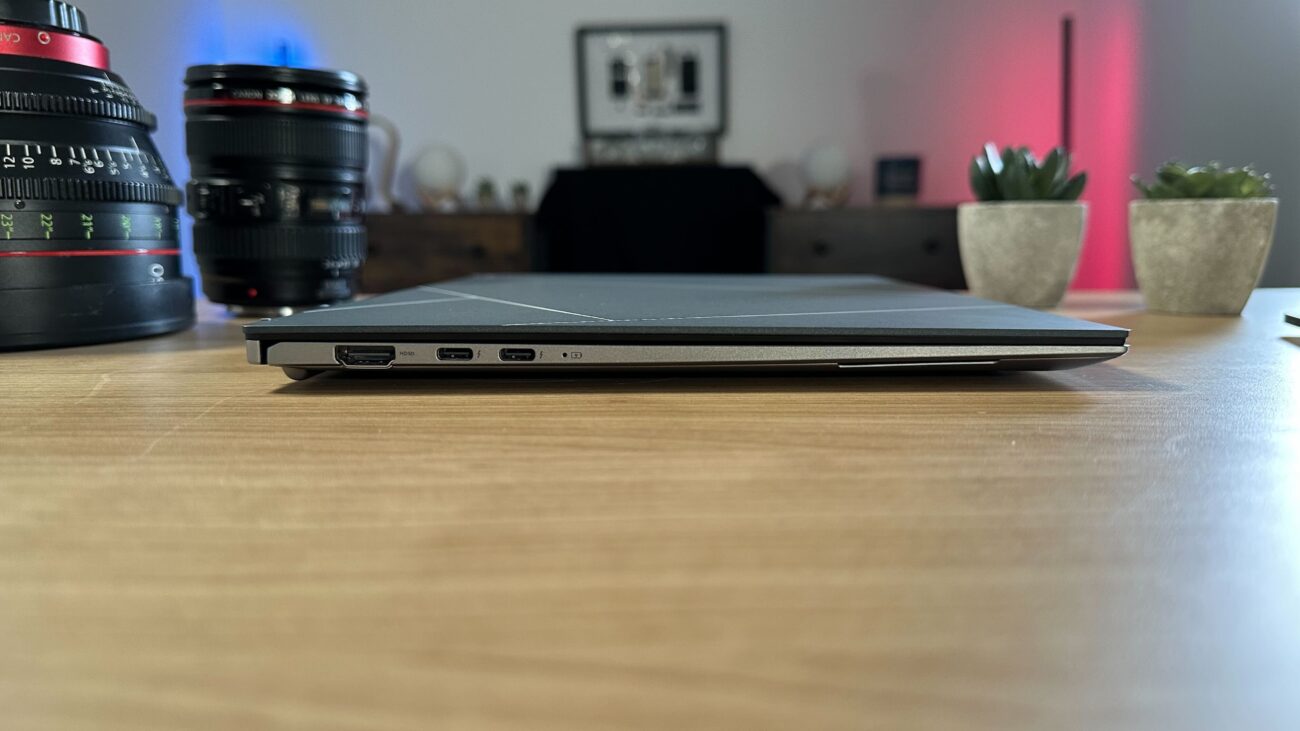

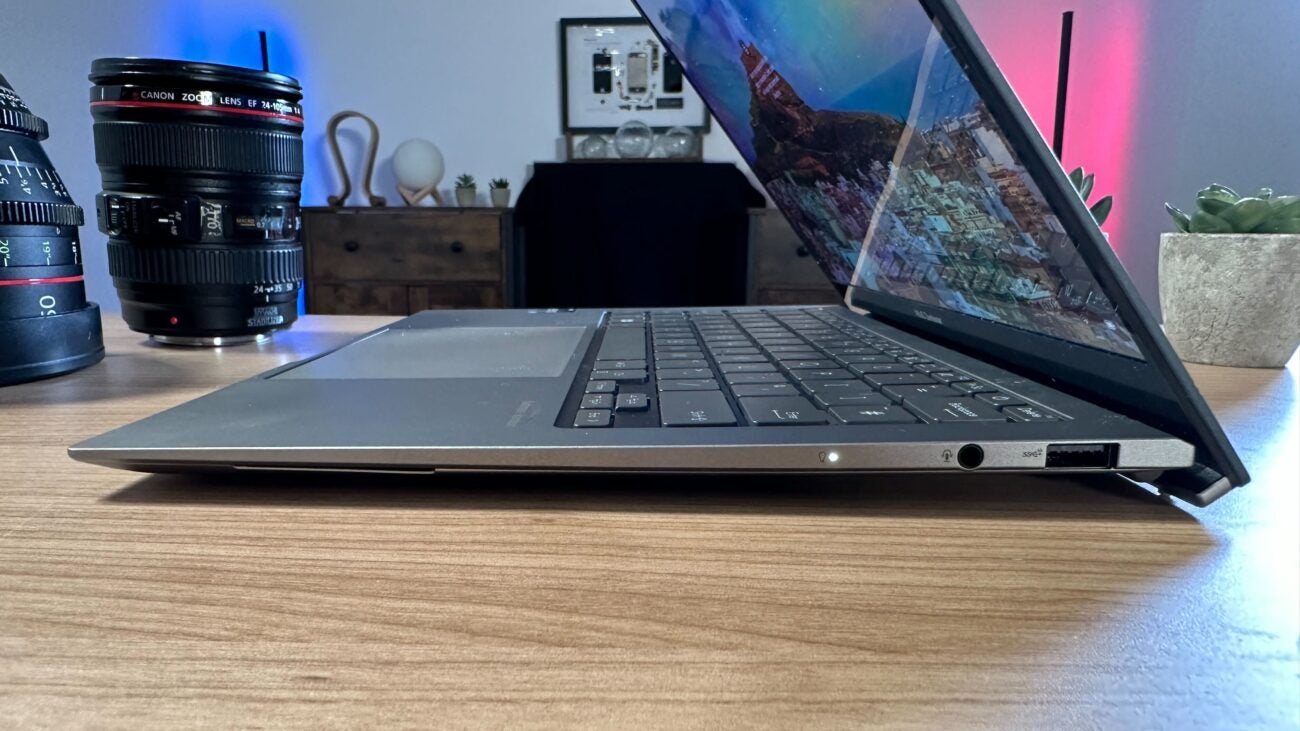

Verdict
The Asus Zenbook S 13 OLED (2023) had a lot to live up to, with its predecessor a solid contender for the best laptop of 2022. The 2023 model is still very good but a switch to Intel and a focus on being supremely thin and light has kept it from being a crowning achievement.
Pros
- A near-flawless OLED display
- Suitable productivity performance
- Good battery life
- Jaw-droppingly thin and light
Cons
- Irritating fan noise
- Battery capacity and graphical power worse than last gen
- High starting price
Availability
- UKRRP: £1499.99
- USARRP: $1399.99
Key Features
- 13th Gen Intel chipAvailable with up to a 13th Gen Intel Core i7 processor
- Up to 16-hours battery lifeMSI touts up to 16-hours of battery life from its 75Wh cell
- Thin and lightWeighs in a 990g and just 13.9mm thin
Introduction
The Asus Zenbook S 13 OLED (2023) is set to be another barnstormer from the prolific brand. On the face of it, the new version sees the 2022 model boosted with a more stylish look and an even trimmer design. But, there’s more to the story.
The Zenbook S 13 OLED (2022) was our top laptop of last year, gaining a 5-star review. It was a stunning achievement, topping many impressive devices from rivals like Apple, HP, Lenovo and more.
For the new model, Asus is not resting on its laurels, attempting to enhance what the previous version did best and fix a key criticism. It’s not an easy task and the result shows the pursuit of perfection can lead to you taking one step forward and two steps back. Here’s my full review.
Design and Keyboard
- A perfectly pleasant keyboard
- Stunningly thin and light design
- Solid set of ports
The new Asus Zenbook S 13 OLED is one of the most impressive laptops on the market right now when it comes to design. The previous model wasn’t much of a looker but it was impressively lightweight in its own right.
With the 2023 iteration, Asus has managed to enhance this slightly further but, also, with a newly designed lid, make this laptop quite the looker. The new lid is, both, stylish and eye-catching. It’s a massive step up from the bland 2022 model and offers something unique when compared with rivals’ relatively plain designs. The unique lid is formed of plasma ceramic aluminium, giving it a tactile feel. That’s the most eye-catching part of what Asus calls its “most sustainable Zenbook ever”, with post-consumer recycled, post-industrial recycled and ocean-bound materials used throughout as part of the all-metal chassis.



The dimensions come in at 296.2 x 216.3 x 10.9mm and 990g, and the proof is in the holding. Picking up this laptop, it often feels like you’re lifting up a dummy model of a device, not something wielding the latest productivity components. It’s astounding. Not even Apple’s MacBook Air gives off this level of wondrous design vibes – only an iPad Pro surpasses this laptop in the jaw-droppingly thin-and-light race.
Asus sets a high bar for itself when it comes to keyboards, with its gaming laptop keys being some of the best around. The S 13 OLED doesn’t quite live up to this standard, but it’s largely expected, with such a thin chassis. The thinness means there isn’t a huge amount of travel and, when you’re in full flow, it can feel like you’re thudding against the laptop’s hard deck. But, it’s a passable experience overall.
The trackpad is remarkably large for such a small device, with a responsive and pleasing click from corner to corner.




You’ll also find boosted ports compared with the previous generation. The 2022 model offered a paltry selection of just three USB-C ports and a headphone jack. This time out, there are two Thunderbolt 4 ports, a USB-A, an HDMI 2.1 and an audio combo jack. That boost up to Thunderbolt 4 comes with the switch from AMD to Intel for the 2023 version. The webcam is solid, offering a Full HD resolution and an overall pleasant picture, but nothing revolutionary.
Display and Sound
- Glorious OLED screen
- Great colour coverage for pros
- Timid audio
As a device for media playback, the Asus Zenbook S 13 OLED is a mixed, if mostly positive, bag.
The 13-inch 16:10 2.8K OLED panel is nothing short of stunning. It offers a solid max brightness of 355nits, which is boosted even further for HDR content. But where this OLED truly shines is with its colourful performance.
It’s remarkably accurate, with a coverage of 100% sRGB, 94% Adobe RGB and 100% DCI-P3. As an OLED, the contrast comes in at a perfect 0:1.

The result is a display that’s a joy to look at in almost any scenario. The added pixels and squarer aspect ratio make this an ideal laptop for productivity, even at its small 13.3-inch size. The vibrant looks make this phenomenal for watching video anywhere too, greatly boosting the visuals of the most cinematic movies.
Unfortunately, the audio doesn’t astound in the same way and doesn’t come close to the best productivity laptop speakers on the market from the likes of the MacBook Air M2.
The speakers are by no means bad, offering average levels of detail that don’t disappear at higher volumes and a smidgen of bass. But, paired alongside this wondrous screen, it would dramatically reduce the cinematic enhancement they provide. You should probably just go with headphones. But, for the odd video or podcast-listening session, they are perfectly fine.
Performance
- Good performance for productivity
- Ditches limited gaming capabilities of last gen
- Loud and annoying fan noise
The performance that the Zenbook S 13 OLED manages to achieve adds up to a strong productivity performer – no complaints there. But, how this laptop deals with thermals as well as the reduced multi-core and graphical capabilities does hold it back.
Asus has gone with a 13th Gen Intel U-series chip for the Zenbook S 13 OLED, which makes sense given how supremely thin this laptop is. Our review model comes with an Intel Core i7-1355U (the only CPU option coming to the UK, but a Core i5 version will be available in some regions), 1TB SSD and 16GB RAM.
On the face of it, the combination is more than enough for serious productivity use and it does take a lot to get this machine to start to stall – think upwards of 20-25 tabs. That’s decent but not remarkable. You can see from our benchmarking tests above that this machine largely keeps up with key rivals but it’s obvious that Intel’s U-series lacks in the multi-core department for more demanding workloads.
The SSD speeds are extremely competitive, if not some of the best around. The results come in at 6892.75MB/s read and 5165MB/s write, topping Samsung’s Galaxy Book 3 Pro write speeds comfortably and destroying the Acer Swift Go 14 across the board.
Further, the graphical performance is drastically reduced from the previous generation. Our 2022 S 13 OLED review touted its capabilities as a low-end gaming and creativity machine but the 2023 model isn’t up to that at all. Its capabilities only come in at scraping by with the most basic low-demand gaming and editing, and nothing close to the Medium quality games performance we found with last year’s version.
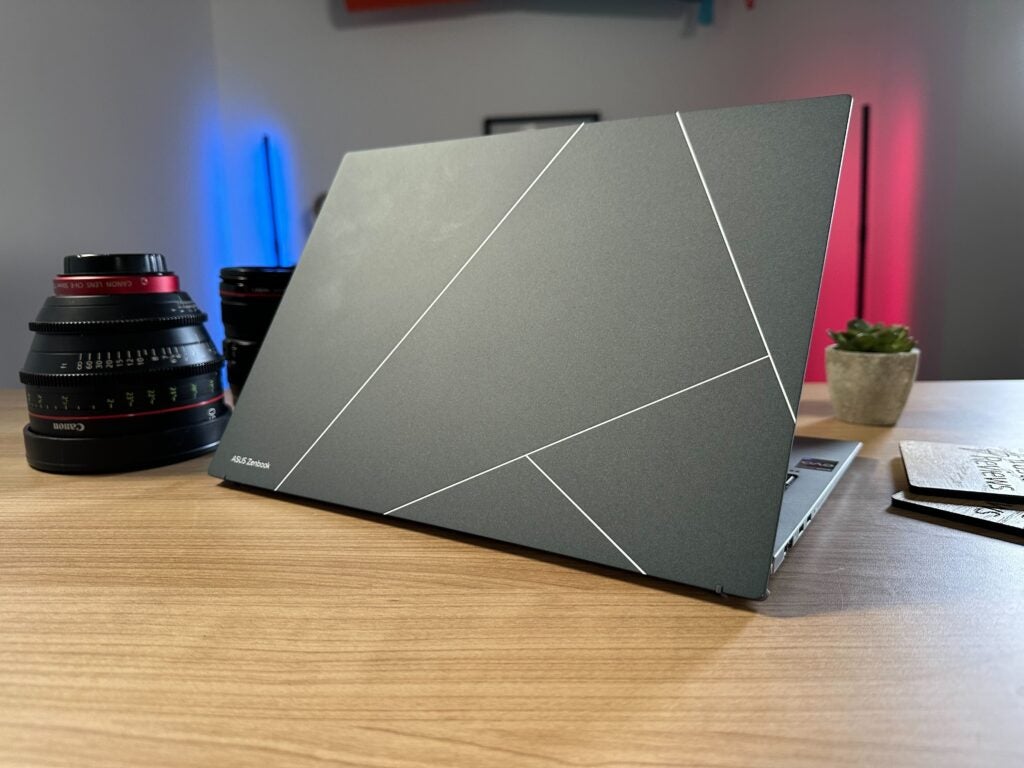
If you’re in this for productivity, that won’t worry you all that much. However, the real problem here is the fans. The fans kick in early and aggressively. As soon as I began with some moderate multitasking or launched upwards of 7-9 tabs, the fan noise was loud and quite high-pitched. It’s enough to cause concern on my part and, certainly, enough that I’d not recommend this laptop to anywhere who wants anything like a quiet laptop experience. The fans are aggressive and eager.
There is a godsend in the form of Asus’ Whisper Mode, which holds back the fans and still offers middling productivity performance. But, avoiding such annoying fan noise should be the default and not require you to dive into the settings and limit performance.
Battery Life
- Long battery life
- Reduced capacity from last gen
- 1-100% in under 90 minutes
The battery capacity of the Zenbook S 13 OLED has dropped down to 63Wh from the 67Wh of the previous model, and it shows. Instead of letting you run well into the next day, you just get a bit extra in the tank for the following morning.
In our benchmark testing, that added up to just under 12 hours. That’s a few hours less than the MSI Prestige 13 Evo, which features a similar frame but a worse IPS LCD display. Nevertheless, the result comfortably tops many rival productivity machines, including the Galaxy Book3 Pro and its larger Zenbook 15 OLED stablemate.
Latest Deals
Should you buy it?
You crave a supremely thin-and-light productivity machine and an OLED screen
This laptop is a remarkable feat of design that is usually reserved for luxury brands like Apple. The gorgeous OLED display matches up to this standard too.
You demand more than middling productivity power, and prefer a quiet laptop
The 2022 S 13 OLED offered strong productivity as well as surprising gaming capabilities. The new model lacks graphical and multi-core power, while also featuring consistently irksome fan noise.
Final Thoughts
The Asus Zenbook S 13 OLED (2023) isn’t the best laptop of 2023, marking a step backwards from the stunning 2022 model. The move to Intel’s U-series chips and a desire for even greater lightweight dimensions has seen Asus come a cropper. A high starting price of £1499/$1399.99, with only the Core i7 model available in the UK, also starts it off on unsteady ground.
It’s not a huge fall from grace though, with the fan noise being the largest irritant, but it can be dodged with Asus’ Whisper Mode. The productivity capabilities are up to snuff and it’s remarkably portable, while the lush OLED display is a phenomenal coup for this laptop. But, just don’t expect much in the way of gaming or creative capabilities.
If you want the best Windows laptop for stylish lightweight design, this is still right up there, and the battery life remains strong too. But, for a more well-rounded package, consider competition in the form of the MacBook Air M2, Samsung Galaxy Book3 Pro and Acer Swift Go 14. Or, even, consider the Asus Zenbook S 13 OLED (2022) if you can find it for a reduced price as it remains a 5-star machine.
How we test
Every laptop we review goes through a series of uniform checks designed to gauge key things including build quality, performance, screen quality and battery life.
These include formal synthetic benchmarks, scripted tests and a series of real-world checks.
We used as our main laptop for at least a week.
Tested the performance via both benchmark tests and real-world use.
We tested the screen with a colorimeter and real-world use.
We tested the battery with a benchmark test and real-world use.
FAQs
No, the OLED panel on the Zenbook S 13 OLED is not a touch display.
The latest version of the Asus Zenbook S 13 OLED will be released in July 2023.
No, the Asus Zenbook S 13 OLED comes with RAM soldered to the motherboard and, as such, is not user upgradeable.







